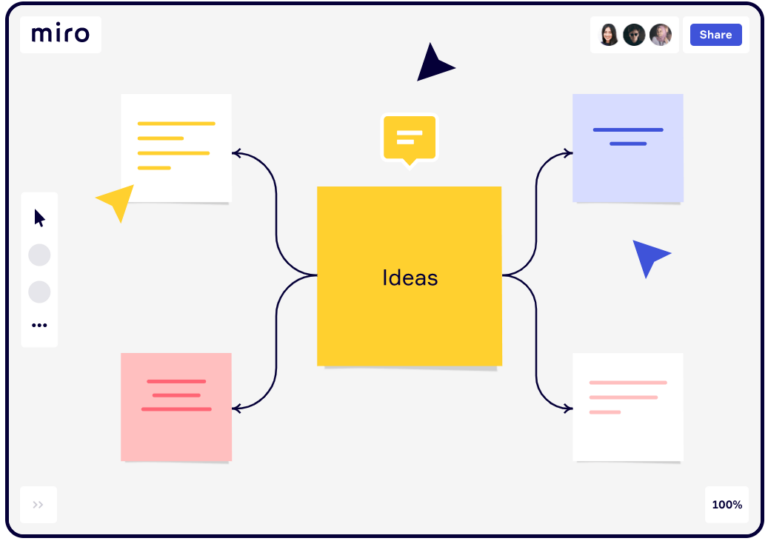Padlet Vs Jamboard – Comparison
With the total transition of working and education online, interest in virtual boards has increased. Their use can solve a wide variety of tasks: jointly perform exercises and see each other’s actions, show with an arrow the place you should pay attention to, make notes, stick stickers, and draw. Check the difference between jamboard and padlet in the article below.
The most important to consider about Padlet and Jamboard
Jamboard is a G Suite digital whiteboard that offers a rich collaboration experience for teams and audiences. Watch your creativity unfold: you can create a jam, edit it from your device and share it with others. Everyone can collaborate on Jam anytime, anywhere. For businesses and schools using Jamboard equipment, you can use your phone or tablet to join or open a Jam on a nearby board.
Although Jamboard was originally created for online meetings and project work, the board was quickly adapted for online lessons. By sharing the link with the students, it is easy to explain the material of almost any subject on the board. The service works easily and smoothly, and does not overload computer resources, does not slow down when used simultaneously with other programs (for example, Zoom or Skype). You can add both text and images to the board. Lesson material can be saved and shared later. Learning how to use the service is not difficult, and it will not take a lot of precious teacher time.
Padlet is a digital program that performs the functions of a conventional whiteboard with virtual control. Digital whiteboards can be integrated with other video conferencing and screen-sharing platforms to enable collaboration even for remote employees. Various colors, shapes, and patterns are available for the virtual whiteboard. Such boards can be saved as files with shared access, thanks to which you can work on them later. With a camera and speaker, the smart digital board for online teaching is an easy way to conduct teleconferencing and smart learning without the hassle of preparation; users just need to take their devices to immediately start a meeting or course.
The most comprehensive Padlet vs Jamboard comparison
Modern online boards come to the rescue. They can become both a place for planning, a tool for explaining the visualization of educational material, and a way of brainstorming. They are well suited for planning, discussing any ideas, and, most importantly, collaborating with students, including during video conferences.
The Jamboard board, being part of Google, has the same capabilities as other services for granting access rights – reading, editing, and commenting; that is, students have the ability to view the contents of the board, as well as make notes. Websites need space to store emails, web files, images, and databases. When evaluating storage requirements, you should also consider further scaling the website and increase its traffic.
More advanced functionality has a Padlet board, which is one of the most popular services among professionals. However, its application is also possible in the process of teaching mathematics in conditions of blended learning. The Padlet offers various templates (wall, canvas, tape, storyboard, columns, conversations, map, timeline), and the teacher chooses what he needs depending on the planned lesson outcome.
Padlet and Jamboard combine the following common features:
- Notifications.
- Access control.
- Comments.
- Collaborative editing.
- Templates.
- Insert media.
- Content blocking.
- Adaptability for mobile screens.
The distinctive features between them are the following:
- Work with e-mail.
- Dashboard.
- Document management.






